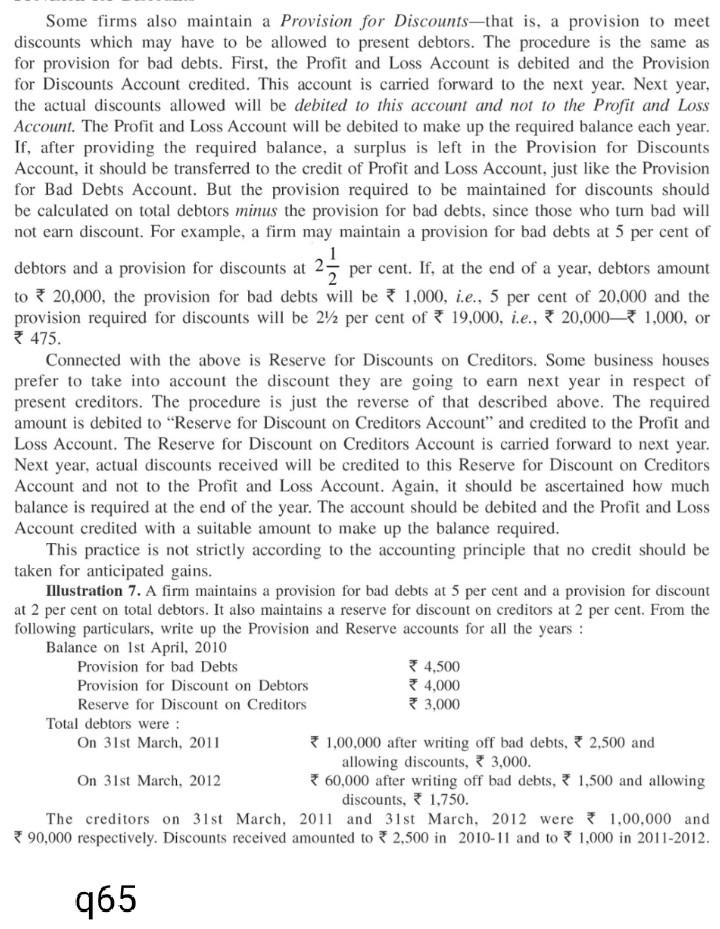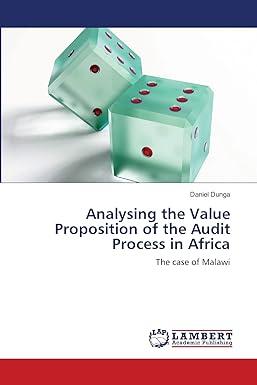Answered step by step
Verified Expert Solution
Question
1 Approved Answer
12 1/2 Some firms also maintain a Provision for Discounts-that is, a provision to meet discounts which may have to be allowed to present debtors.

12 1/2 Some firms also maintain a Provision for Discounts-that is, a provision to meet discounts which may have to be allowed to present debtors. The procedure is the same as for provision for bad debts. First, the Profit and Loss Account is debited and the Provision for Discounts Account credited. This account is carried forward to the next year. Next year, the actual discounts allowed will be debited to this account and not to the Profit and Loss Account. The Profit and Loss Account will be debited to make up the required balance each year. If, after providing the required balance, a surplus is left in the Provision for Discounts Account, it should be transferred to the credit of Profit and Loss Account, just like the Provision for Bad Debts Account. But the provision required to be maintained for discounts should be calculated on total debtors minus the provision for bad debts, since those who turn bad will not earn discount. For example, a firm may maintain a provision for bad debts at 5 per cent of 1 debtors and a provision for discounts at 2 per cent. If, at the end of a year, debtors amount to $20,000, the provision for bad debts will be * 1,000, i.e., 5 per cent of 20,000 and the provision required for discounts will be 2/2 per cent of 19,000, i.e., 20,0001,000, or 475. Connected with the above is Reserve for Discounts on Creditors. Some business houses prefer to take into account the discount they are going to earn next year in respect of present creditors. The procedure is just the reverse of that described above. The required amount is debited to "Reserve for Discount on Creditors Account" and credited to the Profit and Loss Account. The Reserve for Discount on Creditors Account is carried forward to next year. Next year, actual discounts received will be credited to this Reserve for Discount on Creditors Account and not to the Profit and Loss Account. Again, it should be ascertained how much balance is required at the end of the year. The account should be debited and the Profit and Loss Account credited with a suitable amount to make up the balance required. This practice is not strictly according to the accounting principle that no credit should be taken for anticipated gains. Illustration 7. A firm maintains a provision for bad debts at 5 per cent and a provision for discount at 2 per cent on total debtors. It also maintains a reserve for discount on creditors at 2 per cent. From the following particulars, write up the Provision and Reserve accounts for all the years : Balance on 1st April, 2010 Provision for bad Debts 4,500 Provision for Discount on Debtors 4,000 Reserve for Discount on Creditors 3,000 Total debtors were: On 31st March, 2011 1,00,000 after writing off bad debts, *2,500 and allowing discounts, 3,000. On 31st March, 2012 60,000 after writing off bad debts, * 1,500 and allowing discounts, 1,750. The creditors on 31st March, 2011 and 31st March, 2012 were 1,00,000 and 90,000 respectively. Discounts received amounted to *2,500 in 2010-11 and to 1.000 in 2011-2012. 465
Step by Step Solution
There are 3 Steps involved in it
Step: 1

Get Instant Access to Expert-Tailored Solutions
See step-by-step solutions with expert insights and AI powered tools for academic success
Step: 2

Step: 3

Ace Your Homework with AI
Get the answers you need in no time with our AI-driven, step-by-step assistance
Get Started


